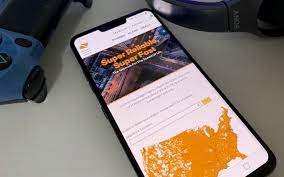The Best Adhesive for Cardboard: A Comprehensive Analysis

PVA Glue
PVA (Polyvinyl Acetate) glue is a popular choice for bonding cardboard due to its versatility and ease of use. It is a water-based adhesive that dries clear and provides a strong bond. PVA glue is readily available in most craft stores and is affordable, making it a great option for both hobbyists and professionals.
One of the advantages of PVA glue is its ability to bond different types of cardboard, including corrugated and chipboard. It also works well with other materials commonly used in conjunction with cardboard, such as paper and fabric. This makes it an excellent choice for various projects, from creating cardboard sculptures to constructing packaging boxes.
Another benefit of PVA glue is its relatively quick drying time. While the exact drying time may vary depending on factors such as temperature and humidity, PVA glue typically dries within 30 minutes to an hour. This allows for efficient work progress and reduces the risk of accidental displacement during the bonding process.
However, it’s worth noting that PVA glue may not be suitable for applications where moisture resistance is required. Since it is water-based, prolonged exposure to water or high humidity can weaken the bond. Therefore, if you are working on projects that may come into contact with moisture, consider using a different adhesive.
Hot Glue
Hot glue, also known as hot melt adhesive, is a widely used adhesive for various applications, including cardboard bonding. This adhesive is applied using a hot glue gun, which melts the glue stick and allows for precise application. Hot glue is known for its quick bonding time and high strength.
One of the main advantages of hot glue is its fast setting time. Once applied, hot glue typically sets within seconds, providing an almost instant bond. This makes it ideal for projects that require immediate adhesion, such as assembling cardboard structures or repairing packaging boxes.
Hot glue also offers excellent bonding strength. It forms a strong bond with cardboard, ensuring that the pieces stay firmly in place. However, it’s important to note that hot glue may not be suitable for projects that require flexibility, as it can become brittle over time.
Additionally, hot glue may not be the best choice for delicate or heat-sensitive materials, as the high temperature of the glue gun can cause damage. Therefore, it is essential to consider the specific requirements of your project before opting for hot glue as your adhesive of choice.
Epoxy
Epoxy adhesive is a two-part adhesive that consists of a resin and a hardener. When mixed together, these components create a strong and durable bond. While epoxy is commonly used for bonding metals and plastics, it can also be an excellent choice for cardboard projects that require exceptional strength.
One of the key advantages of epoxy is its high bonding strength. It creates a robust bond that can withstand heavy loads and resist impact. This makes it suitable for applications where cardboard needs to support weight or endure rough handling.
Epoxy adhesives also offer excellent resistance to moisture and temperature fluctuations. Once cured, epoxy forms a waterproof and heat-resistant bond, making it ideal for projects that may be exposed to harsh conditions.
However, it’s important to note that epoxy can be more challenging to work with compared to other adhesives. The mixing process requires precision, and the adhesive may have a shorter working time before it starts to cure. Additionally, epoxy can be more expensive than other adhesive options, so it may not be the most cost-effective choice for all projects.
Spray Adhesive
Spray adhesive is a versatile adhesive option that can be used for bonding cardboard. It comes in aerosol cans and is applied by spraying a thin, even layer onto the surface. Spray adhesive offers several advantages, including ease of use, even coverage, and quick drying time.
One of the main benefits of spray adhesive is its ease of application. The aerosol can allows for precise and even coverage, ensuring that the adhesive is evenly distributed across the cardboard surface. This results in a strong and uniform bond.
Spray adhesive also offers a relatively quick drying time, allowing for efficient work progress. Depending on the specific product, drying times can range from a few minutes to an hour. However, it’s important to follow the manufacturer’s instructions regarding drying time to ensure optimal bonding strength.
While spray adhesive provides a convenient and efficient bonding solution, it may not be suitable for all projects. It is important to consider factors such as ventilation and overspray when using this adhesive. Additionally, some spray adhesives may have a strong odor, so it’s advisable to work in a well-ventilated area.
Conclusion:
Choosing the right adhesive for cardboard projects is essential to ensure a strong and reliable bond. PVA glue offers versatility and ease of use, while hot glue provides quick bonding and high strength. Epoxy offers exceptional durability and resistance, while spray adhesive provides convenience and even coverage. Consider the specific requirements of your project and select the adhesive that best suits your needs. With the right adhesive in hand, you can confidently tackle any cardboard project with ease and efficiency.





